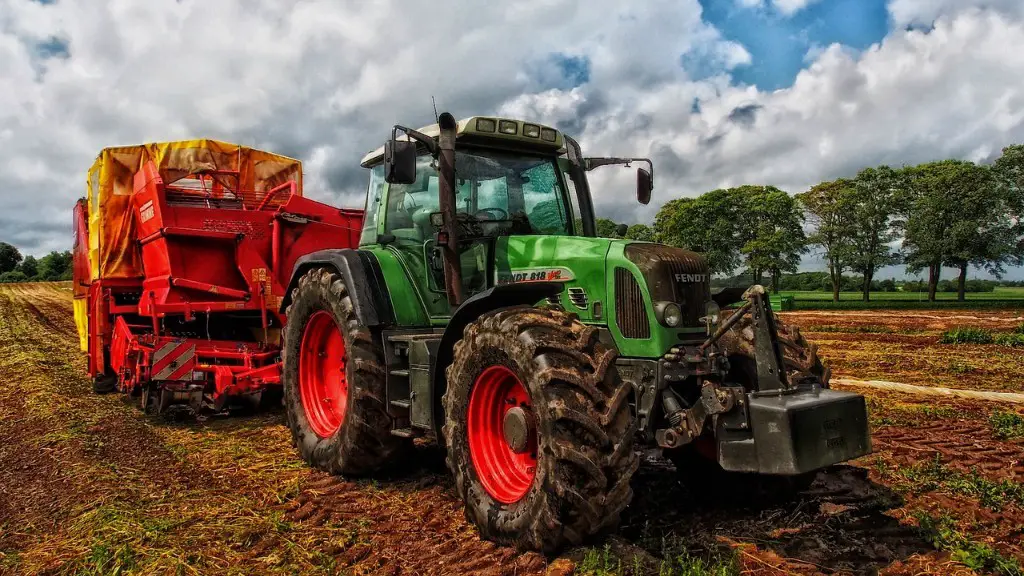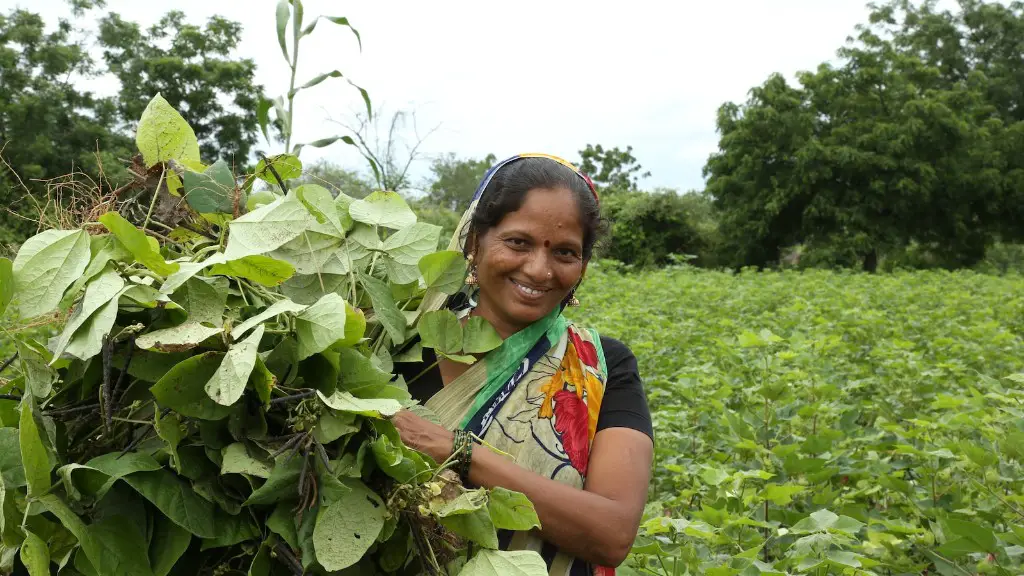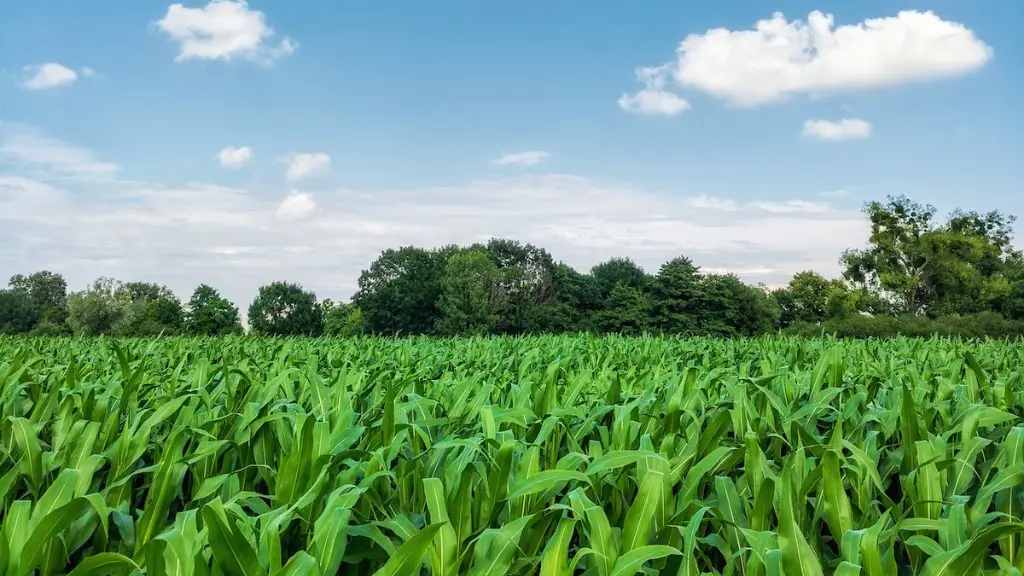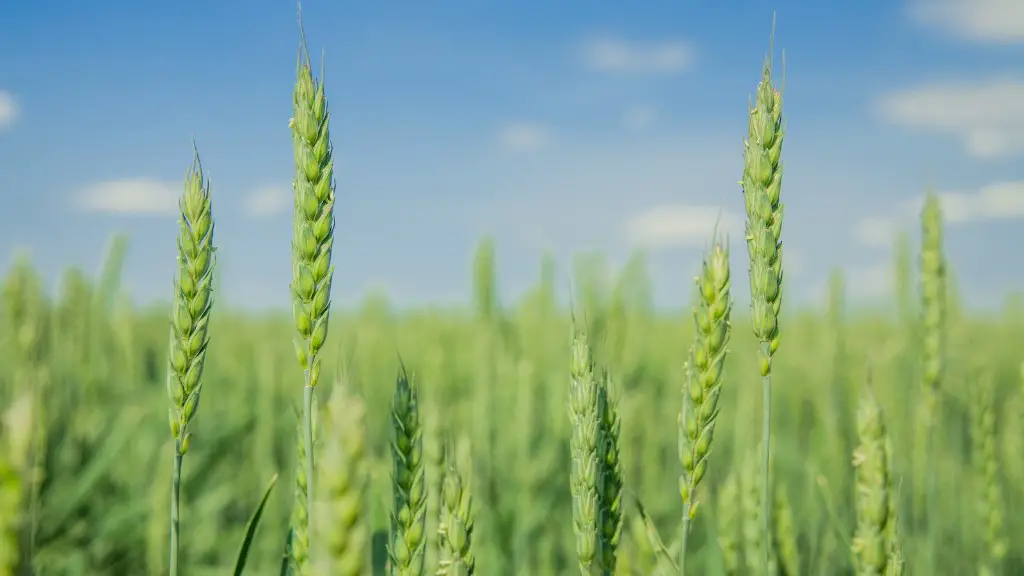Climate change is a pressing global issue, and agriculture is a leading contributor. Agriculture accounts for around 10% of global greenhouse gas emissions, and the sector is projected to grow as the world’s population increases. Agriculture leads to climate change in a number of ways: emissions from livestock, fertilizer use, deforestation, and so on. These emissions are contributing to the warming of the planet, and the resulting climate change is having a significant impact on agriculture itself. High temperatures and extreme weather events are disrupting crop growth, while changing patterns of precipitation are affecting water availability. As agriculture continues to contribute to climate change, the negative impacts on the sector are likely to intensify, posing a serious threat to global food security.
Climate change is a complex problem with many contributing factors. Agriculture is just one of those factors, but it is an important one. One way that agriculture leads to climate change is through the production of greenhouse gases. Agriculture accounts for about 10% of all human-produced greenhouse gas emissions. Greenhouse gases like carbon dioxide and methane trap heat in the atmosphere, causing the Earth to warm. This has serious consequences for agriculture, as a warmer climate can lead to crop failures, droughts, and increased pests and diseases. Additionally, agriculture contributes to climate change through the clearing of trees and other vegetation. This deforestation not only releases greenhouse gases, but it also decreases the amount of carbon dioxide that plants can absorb, exacerbating the problem.
How does agricultural impact climate change?
It is estimated that changes in agricultural production practices could result in a reduction of greenhouse gas emissions by up to 10 percent. Additionally, such changes could also increase the amount of carbon dioxide removed from the atmosphere through carbon sequestration. Farm operators can change production practices or land use to increase the carbon stored in soil or vegetation. For example, they can reduce tillage, use cover crops, and implement crop rotations.
Agriculture is the leading source of pollution in many countries. Pesticides, fertilizers and other toxic farm chemicals can poison fresh water, marine ecosystems, air and soil. They also can remain in the environment for generations.
How much of climate change is caused by agriculture
There are a few key ways to reduce greenhouse gas emissions from agriculture:
1. Improve livestock management practices – this can include things like better diets for livestock, and managing manure to reduce methane emissions.
2. Use more efficient agricultural practices – for example, no-till farming can help to reduce emissions from soil disturbance.
3. Change rice production practices – for example, using alternate wetting and drying (AWD) can help to reduce methane emissions from rice paddies.
4. Increase carbon sequestration in agricultural soils – this can be done through practices like cover crops and agroforestry.
Factory farming is one of the biggest contributors to climate change, releasing vast quantities of greenhouse gases into the atmosphere. These gases trap heat and cause the Earth to warm, leading to all sorts of negative consequences such as more extreme weather events and rising sea levels.
It’s clear that we need to do something about factory farming if we want to protect the planet from further damage. One way to do this is to support initiatives that promote more sustainable and humane farming practices. Another is to reduce our consumption of animal products, which would help to decrease the demand for factory-farmed meat and other products.
What are 3 negative effects of agriculture on the environment?
Large-scale, conventional farming is not sustainable in the long term. It contributes to climate change, pollutes air and water, and depletes soil fertility. Organic farming is a more sustainable approach that relies on natural processes and practices to produce food.
Agriculture is one of the leading causes of environmental degradation. Agriculture contributes to climate change, deforestation, biodiversity loss, dead zones, genetic engineering, irrigation problems, pollutants, soil degradation, and waste. These issues cause environmental degradation and negatively impact the environment.
What are 3 effects of agriculture?
While agriculture can have positive effects on the environment, such as increasing oxygen production and improving the climate, it can also have negative effects, such as inorganic nitrate pollution, pesticide pollution, and salinity problems. These negative effects are most pronounced in regions where agriculture is practiced intensively.
Fossil fuels are by far the largest contributor to global climate change, accounting for over 75 per cent of global greenhouse gas emissions and nearly 90 per cent of all carbon dioxide emissions. As greenhouse gas emissions blanket the Earth, they trap the sun’s heat, causing the Earth’s temperature to rise.
The use of fossil fuels has increased dramatically over the past few hundred years, as our reliance on them for energy has grown. But now we know that their use is causing harmful climate change, we need to find other ways to power our homes and businesses.
renewable energy sources like solar and wind power. We also need to do more to improve energy efficiency, so that we can reduce our demand for energy overall.
The good news is that there are many ways we can move away from fossil fuels and towards a cleaner, greener future. But we need to act now, before it’s too late.
What are the 5 major consequences of agriculture
Agriculture has had a profound effect on the environment. Five of the most significant environmental effects of agriculture are soil fertility loss, eutrophication of water bodies, deforestation, climate change and pesticide pollution.
Soil fertility loss is caused by the removal of nutrients from the soil. These nutrients are essential for plant growth, and their depletion can lead to a decline in crop yields.
Eutrophication of water bodies occurs when excessive nutrients are introduced into a body of water, leading to an increase in algae growth. This can choke off oxygen levels and lead to the death of fish and other aquatic organisms.
Deforestation is often a result of agricultural expansion. Trees are cleared to make way for crops or grazing land, and this can lead to habitat loss and soil erosion.
Climate change is partly caused by the release of greenhouse gases from agricultural activities. These gases trap heat in the atmosphere, causing global temperatures to rise.
Pesticide pollution is another environmental effect of agriculture. Pesticides are used to protect crops from pests, but they can also contaminate soil and water. This can lead to health problems for people and animals.
It is agreed that the slash-and-burn agricultural practice has many negative impacts on the environment. The most cited problems are typically water pollution from the use of toxic pesticides and insecticides, loss of forest soil and biodiversity due to the heavy tillage, and the release of greenhouse gases into the atmosphere from the burning of the slash.
Slash-and-burn agriculture has been used for centuries by subsistence farmers in many parts of the world. It is a simple and effective way to clearing land for cultivation. The problem is that it is not a sustainable practice in the long-term. The soil nutrients are quickly depleted and the land must be abandoned after a few years. This forces farmers to move on to new areas, leading to the loss of forest cover.
There are many efforts underway to try to mitigate the negative impacts of slash-and-burn agriculture. One is to encourage the use of more sustainable farming practices, such as agroforestry. This involves planting trees along with crops, which can help to protect and restore the soil. Another approach is to encourage the use of more efficient stoves, which can reduce the amount of fuel needed for burning and so minimize the release of greenhouse gases.
What are at least 3 cons to our agricultural practices?
The importation of live animals for human consumption increase the risk of animal cruelty, negatively impacts small business agriculture, creates environmental concerns, contributes to health problems, and can produce low-quality food.
Farmers across the globe face a multitude of problems on a daily basis. They must contend with climate change, soil erosion and biodiversity loss, amongst other issues. They must also satisfy consumers’ changing tastes and expectations, whilst meeting rising demand for more food of higher quality. To add to the challenges, farmers must also invest in farm productivity and adopt and learn new technologies. Despite all these difficulties, farmers must stay resilient against global economic factors.
What is the most problem in agriculture
Beef and dairy cattle, along with chickens and pigs, are the four main types of livestock in the United States.
Livestock production is a significant contributor to greenhouse gas emissions. Agriculture currently accounts for 11 percent of US emissions, and of that, 36 percent comes from the raising, feeding, and management of livestock. Reducing the impact of livestock production on the environment will require a multifaceted approach that includes improved practices, new technologies, and changing consumer behaviors.
What pollution is caused by agriculture?
The impact of agriculture on water quality is severe and far-reaching. Pollutants from farming can be found in lakes, rivers, wetlands, estuaries, and groundwater, causing significant damage to these ecosystems. The most common pollutants from agriculture are sediments, nutrients, pathogens, pesticides, metals, and salts. Animal agriculture has an outsized impact on pollutants that enter the environment, due to the large amount of manure and other waste produced by these operations. These pollutants can have serious consequences for human health, and action must be taken to reduce their impact on our environment.
Agriculture is a major source of greenhouse gas emissions. It releases large quantities of carbon dioxide through the burning of biomass, mainly in areas of deforestation and grassland. Agriculture is also responsible for up to half of all methane emissions.
What is the No 1 cause of climate change
There is no doubt that human activity is the main cause of climate change. We have burned more and more fossil fuels since the beginning of the Industrial Revolution, and converted vast areas of land from forests to farmland. The result is that the Earth’s atmosphere is now full of greenhouse gases, trapping heat and raising the Earth’s temperature. This is causing the climate to change, with more extreme weather events and a general rise in global temperatures. If we want to stabilize the climate, we need to dramatically reduce our emissions of greenhouse gases.
The rise in greenhouse gas emissions is causing the earth’s surface temperature to rise. This is due to the greenhouse effect, which is when these gases trap heat in the atmosphere. This is a major concern because it is causing the earth to warm at an unprecedented rate. We need to take action to reduce these emissions in order to slow down the warming process.
Conclusion
Agriculture can lead to climate change in a number of ways. For example, agriculture can contribute to greenhouse gas emissions, which can trap heat in the atmosphere and contribute to global warming. Agriculture can also lead to deforestation, which can release greenhouse gases like carbon dioxide and contribute to climate change. Additionally, agriculture can lead to soil erosion, which can release carbon into the atmosphere and contribute to climate change.
Agricultural production accounts for a large share of global greenhouse gas emissions, making agriculture a significant contributor to climate change. Agriculture also plays a role in climate change through land-use change, as farmers convert forests and other natural ecosystems to cropland and pasture. These land-use changes can result in carbon dioxide emissions, as well as changes in local climate.





